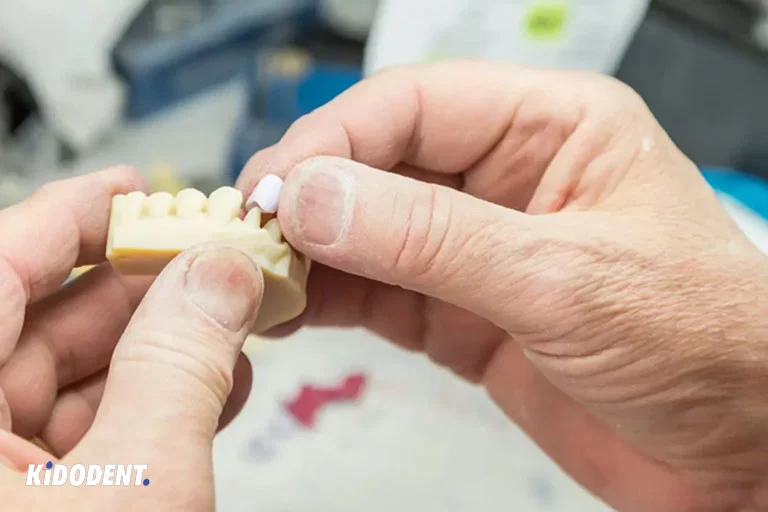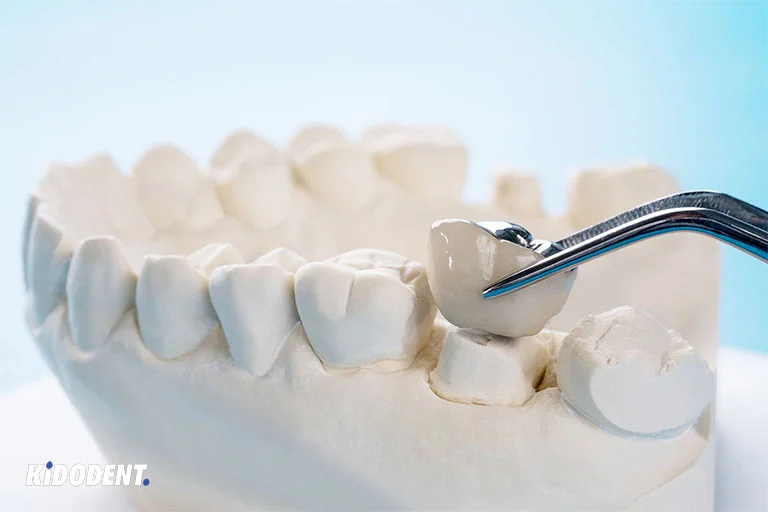A dental crown covers the entire top portion of a damaged tooth, improving the function of your teeth and your overall smile look. It is available in different materials with some last longer than others. Although crowns usually last a long time, they are not meant to last forever and may need replacement at times. However, you can extend their lifespan with proper care. Read the article to know about how the longevity of different types of dental crowns, and how you can extend the life of your crown.
What are crowns used for?
Dental crowns can help restore a broken or cracked tooth that is severely damaged. Your dentist can recommend a crown to strengthen your tooth if you have a large filling and not enough remaining tooth structure. You will need a dental crown to:
- Restore a decayed or broken tooth
- Restore a weak tooth and prevent further damage
- Cover a dental implant
- Protect a tooth undergone a root canal
- Hold a prosthetic tooth for dental bridge attachment
How long do dental crowns last?
The average lifespan of a crown can range around 10 to 15 years. The good thing about a crown is that they are pretty long-lasting in general. However, the lifespan of dental crowns can vary depending on lifestyle habits, the type of material, and oral hygiene.
For example, gold is the most durable crown type that can last decades. And crowns made of zirconia, a newer type of ceramic, can last almost 20 years, which is very durable and great for a tooth-colored, aesthetic material.
Here are factors that affect the longevity of a crown:
- Oral hygiene practices
- Oral habits like bruxism and teeth grinding, or bad chewing habits
- The type of crown and quality of materials used
- How well your crown is made and installed
- The location of the tooth

Different types of crowns and how long they last
Your dentist can offer the crown that can best be suited to your needs. The good thing is there are different types of crowns that you can consider depending on aesthetics, durability, and strength.
If you are looking for a crown that lasts the longest, or if beauty is just your concern, or maybe the combination of strength and aesthetics, there are options for you to choose from.
Here are the main 6 types of dental crowns and their longevity:
Porcelain crowns (ceramic crowns)
Porcelain crowns can last between 5-15 years. They are also called ceramic crowns as porcelain is a type of natural-looking and durable ceramic.
Porcelain crowns are one of the most beautiful options, but they are more prone to chipping.
Porcelain-Fused-to-Metal (PFM)
Porcelain-fused-to-Metal (PFM) crowns are also a popular option which are long lasting and offer a natural appearance. They can last between 15-20 years.
With porcelain-Fused-to-Metal, you have the benefit of greater durability due to their metal-backed structure of the inner part. One of the issues, but, is the metal visibility on edges that shows as gray color if gums recede. Although the porcelain covering on top gives it a great look, it also increases the risks of chipping as well.
Gold
Gold crowns rank the top long-lasting crown with a lifespan that extends for decades. It is in fact the ‘gold standard’ of crowns that can last even a lifetime.
Gold’s resistance to chipping and its strength has made it an incredibly popular material throughout history. One other major benefit of gold is its high capability to preserve tooth structure because it fits perfectly on the tooth.
In dentistry, it is common for gold to be combined with other metal alloys such as chromium, nickel, or palladium. This forms a strong and lasting tooth crown which at the same time decreases its cost. With all the benefits, people may not like a gold crown because of its color. Eventually, you will want them for your back teeth, where they are less visible and still a perfect option.
Zirconia
Zirconia crowns are the strongest metal-free crown material. With a longevity of 25-30 years, they can easily last between 15 to 20 years with proper care and good oral hygiene. Their exceptional strength makes dentists recommend zirconia as an alternative to gold or metal for back teeth, if you don’t like metal visibility.
Zirconia crowns are classified as crystalline ceramics and have an opaque appearance. They are made of an extremely strong type of ceramic called zirconium dioxide (ZrO2) which is ‘doped’ with ions like magnesium or yttrium. The ceramic properties of zirconia offer natural white coloring. Although it is less attractive than glassy ceramics like porcelain, it still mimics natural teeth.
Thanks to computer-aided design/ manufacturing (CAD-CAM), zirconia crowns are fabricated as a CEREC same-day procedure. This means your dentist is able to prepare a more customized crown with high precision in a single visit using advanced technology and modern milling machines.
E-Max: Lithium disilicate
Lithium disilicate, also known as E-Max, offers a unique material choice because of its high aesthetic and high-strength characteristics. On average, this material is able to last between 10-15 years or longer if you take good care of it.
Lithium disilicate is a type of glass ceramic which comes in many translucencies. Although just introduced recently, lithium disilicate is currently one of the best materials offered widely by North American and European dentists and dental laboratories.
This lifelike crown can also be processed using state-of-the-art CAD/CAM milling procedures. So, if you want to have your crown made and placed in just one visit, E-Max can fit your needs.
Metal
Metal crowns offer superior strength that can last almost 20 years considering it is well cared for.
They are very durable and highly corrosion-resistant. However, because of their unsightly color, metal crowns are most often considered for the back teeth. If you are allergic to metal or looking for a crown to look like your actual tooth, metal cannot be a good choice for you.
How can you extend the lifespan of your dental crown?
Here are some precautions you can take to help your crown last as much as possible:
- Step up for good oral hygiene: Brush your teeth at least 2 times a day and floss daily. Your oral hygiene is the most important factor which affects how long your crown lasts. Proper oral care prevents plaque buildup and cavities from forming below and around the edges of the crown on the natural tooth. So, bacteria will not spread underneath the crown, so the dental pulp is not infected.
- Avoid teeth grinding: Clenching and grinding teeth can wear down your crown and cause chipping and fractures. If your crown is made of ceramic or porcelain, your dentist may insist that you wear a mouthguard while you sleep.
- See your dentist for regular cleaning and checkups: Your dentist will check your dental health and monitor the strength and integrity of your crown. So, visit your dentist every six months or so. It can prevent oral health issues that could rise and any risk of damage or leakage in your crown can be detected.
- Don’t use your teeth as tools: Avoid trying to open packaging or uncork bottles with your teeth. These along with habits like chewing on ice or hard items like a pencil and using your teeth to tear things can have negative effects on the longevity of a dental crown.
Frequently asked questions
Dental crowns for the front teeth can last at least 15 years on average. Porcelain, lithium disilicate, and zirconia are all great tooth-colored options for front teeth, while zirconia is superior in terms of strength.
Front tooth crowns are able to last for a long time as they are less subjected to pressure and forces compared to back teeth.
Gold, metal, and zirconia are considered the most durable dental crown materials, making them perfect options for back teeth or molars.
You may need to replace your crown if: 1- You feel pain in the crown tooth and the surrounding natural teeth or the gums.2-You notice the receding gums sign around the tooth has a crown.3- Your crown appears to be unstable, does not fit well, or is cracked or falls out.
